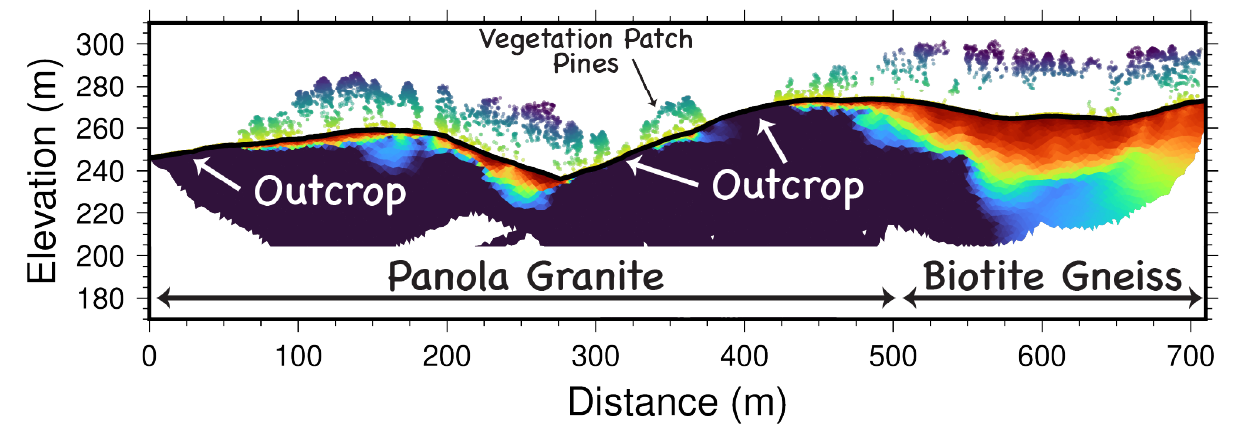Bedrock Heterogeneity¶
Geology Matters¶
The Critical Zone (CZ) is the dynamic, life-sustaining layer of the Earth’s surface where the atmosphere, biosphere, hydrosphere, and geosphere interact. Extending from the top of vegetation to unweathered bedrock, the CZ regulates the fluxes of water, nutrients, and energy that underpin ecosystem function, resilience, and biogeochemical cycling. Over the past decade, growing evidence suggest that the underlying geology can have profound impact on ecosystems at the surface. There are examples where small differences in bedrock minerology content can have substantial effects on regolith thickness and ecosystem productivity. My resaerch focuses on understanding how the underlying mineralogy and inherited bedrock structures such as dikes, faults, and foliation impact the development of CZ.
Beneath the Surface¶
Despite its importance, the deep CZ remains one of the least understood parts of Earth’s surface. Regolith thickness and subsurface porosity vary dramatically across landscapes, yet we lack the tools and data to predict these variations with confidence. Seismic refraction offers a powerful way to image the subsurface, revealing how stress fields, fracture networks, and mineral composition shape the vertical structure of weathered rock. By integrating geophysical surveys with deep drilling and modeling, my research seeks to uncover the hidden architecture of the deep CZ and its role in guiding water flow, nutrient cycling, and ecosystem resilience. My researach is driven by the question: how and why do subsurface weathering and porosity vary spatially across different bedrock types and stress regimes?
Seismic refraction results for a 700 m profile that spans the Panola Mountain Watershed in the Southeastern United States. Visible outcrop occurs from 0-75 m and again from 275-425 m. Canopy structure is taken from a LiDAR point cloud 5 m on each side of the profile. A geologic contact between the Panola Granite and the surrounding biotite gneiss occurs at 450 m. The thick slow-velocity region highlights the potential role of geology in CZ development.
